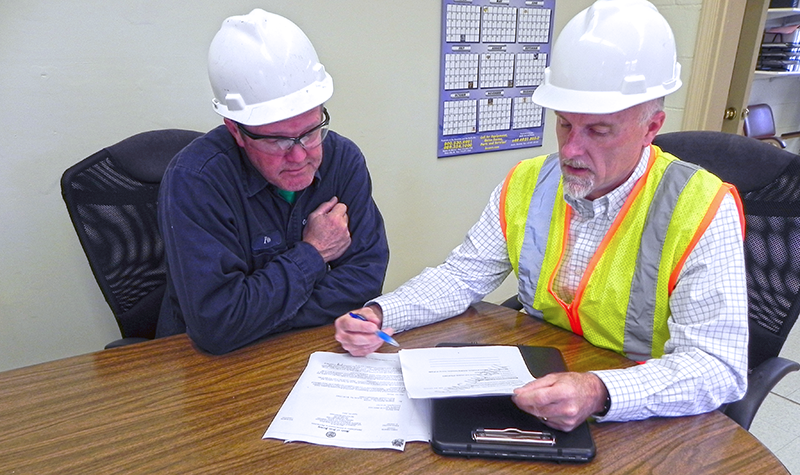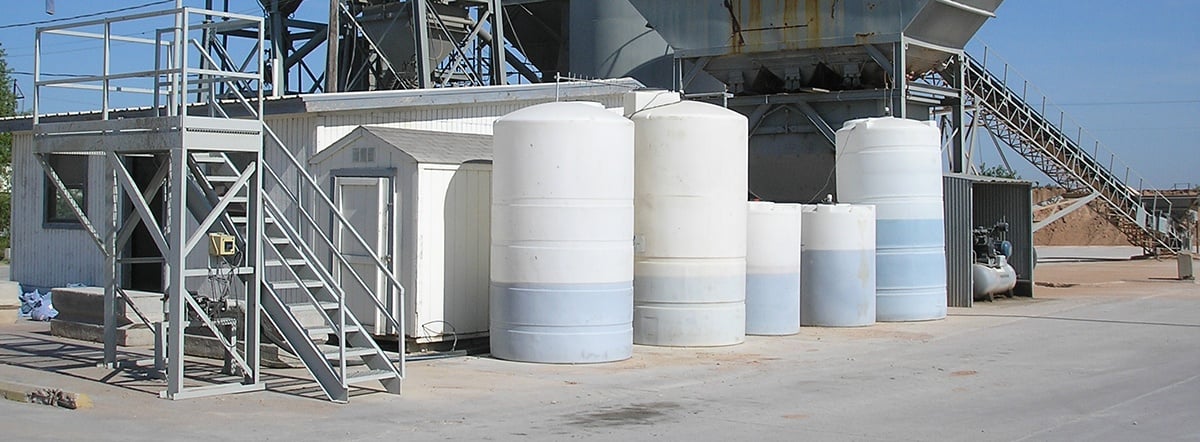We explain the difference between Form A & Form R Reporting when it comes to TRI Reporting.
With the New Year creeping around the corner, we're starting to hear from a lot of old & new clients about certain annual requirements. Whether it's annual certifications as part of an NPDES Stormwater Permit or maybe some type of environmental training like SPCC Training, many folks are being proactive and trying to nip their responsibilities in the bud sooner rather than later.
One annual requirement that many people start considering this time of year is the need for TRI Reporting. For those who aren't familiar with the subject, I encourage you to check out What is TRI Reporting? to learn more.
On a side note, I will add that plenty of folks confused both Community Right-to-Know Reporting and TRI Reporting. If you're one of those people, check out our article Is Tier II Reporting the same as TRI Reporting?
For those who are familiar with the subject, let's address one of the more common questions we get, which is what's the difference between Form A Reporting & Form R Reporting when it comes to TRI Reporting.

TRI Reporting vs Form A Reporting vs Form R Reporting
One of the biggest issues with environmental regulations is the often-confusing names. This is especially true with TRI Reporting. For instance, over the years we've heard TRI Reporting referred to as:
- TRI Reporting
- Toxic Release Inventory Reporting
- EPCRA Reporting
- Form R Reporting
- Form A Reporting
- SARA 313 Reporting
- Section 313 Reporting
- SARA Title III Reporting
- SARA Title III Section 313 Reporting
I've heard others too, but they're too incorrect to count. But, these listed above are all technically correct ways to describe the activity. Here's how it all works.
- There's the Superfund Amendments and Reauthorization Act (SARA for short). Title III of SARA requires that certain types of facilities need to report routine (as well as accidental) toxic chemical releases to the environment.
- Title III of SARA is also known as Section 313, which is known as the Emergency Planning and Community Right-to-Know Act, or EPCRA for short.
- Under this section are the regulations for something referred to as Toxic Release Inventory Reporting, or TRI Reporting for short. There's also something called Tier II Community Right-to-Know Reporting, but that is a vastly different reporting requirement. For more information, I encourage you to check out our article Is Tier II reporting the same as TRI reporting?
- If you're conducting TRI Reporting, there are two forms that can be used for reporting which are called Form A or Form R.
Clear as mud, right? You're probably wondering what's the difference between the two forms at this point.
Think of it like doing your taxes. If you're a contractor, you're using a 1099-MISC form. If you're employed, you'll be using a W-2. At the end of the day you're still using these forms to pay your taxes, there are just different reasons why you would use each form.
At this point, I'm already assuming you know that you need to conduct TRI Reporting. If you're unsure, check out Why do I need to do TRI Reporting? to learn more on the subject.
Here are the main differences between both Form A & Form R.
TRI Reporting & Form R
Without a doubt, this is the more complex form to complete when it comes to TRI Reporting.
- You must answer many different types of questions from production figures to release figures for different release pathways. It’s longer, more comprehensive, and time-consuming.
- Form R must be used if the toxic chemical you're reporting on is a PBT chemical. For example, the lead found in cement used at concrete plants means that both precast and ready-mix concrete plants need to use Form R. If you're not reporting on lead or other PBT chemicals, you don't need to use Form R. However, if you're a concrete plant and you're not reporting lead in your cement, chances are good you're doing TRI Reporting wrong!
- Form R must be used if you manufactured, processed or otherwise used the toxic chemical in excess of 1,000,000 pounds. One million pounds might seem like a lot but say you operate a chemical manufacturing facility, you might hit 1,000,000 pounds in no time. (Side note: It’s important to keep track of usage numbers to ensure you are using the correct form!)
- Form R must also be used if the total annual amount released of the toxic chemical exceeds 500 pounds. This is the total of any/all releases of said chemical, including atmospheric releases, releases to waterbodies, releases to land, etc.
TRI Reporting & Form A
Form A is more simplistic and is often referred to as a "certification statement". You only have to answer a few questions, allowing this form to be completed in a fraction of the time compared to Form R.
Form A can be used in place of Form R if all of the following criteria are met:
- The toxic chemical is not a PBT chemical. Remember, PBT chemicals automatically mean you need to use Form R!
- The toxic chemical was not manufactured, processed, or otherwise used in excess of 1,000,000 pounds. Remember, over one million pounds automatically means you need to use Form R!
- And, the total annual amount released of the toxic chemical did not exceed 500 pounds. If releases are above 500 pounds, then you need to use Form R!
Stay Ahead of TRI Reporting
Like we tell every one of our clients & customers, education and getting things done ahead of time is the best way to stay ahead of this environmental regulation. If you want to avoid a multi-million dollar fine, mountains of paperwork, as well as legal & consultant fees, then stay ahead of reporting by educating yourself and getting things done early!
If you're trying to educate yourself, your best bet is to do one of three things: Ask an industry expert who completely understands TRI Reporting and the regulations surrounding it, contact a competent environmental consultant who understands TRI Reporting (such as us here at RMA!) and the regulations surrounding it, or make an anonymous call to the USEPA and find out more.
If you're hesitant to reach out to experts just yet, I urge you to take anything you hear from colleagues and/or competitors, as well as trade associations with a grain of salt. Why? From our experience, trade groups and colleagues or competitors are often just as in the dark as you are. We've spoken to enough "environmental experts" within various organizations who aren't well-educated on the subject.
With fines for non-compliance ranging from the tens of thousands to tens of millions, no organization out there can afford to be wrong about TRI Reporting.




